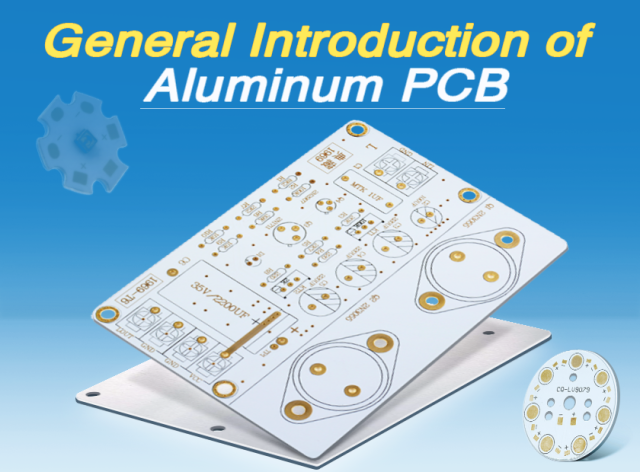Aluminum PCBs, also known as Aluminium PCBs or Alu PCBs, are a category of Insulated Metal Substrate (IMS) PCBs and are among the most widely used Metal Core Printed Circuit Boards (MCPCBs) today. Their exceptional thermal conductivity, mechanical stability, and durability make them ideal for high-power and high-heat–dissipation applications.
At KKPCB, we specialize in the design and manufacturing of metal-core PCBs, delivering high-performance solutions for industries such as:
-
LED lighting
-
Backlit LCD displays (desktop & laptop)
-
Street lighting
-
Medical and industrial monitoring systems
-
Motor control systems
-
Power converters & rectifiers
-
Audio amplification devices
-
Photovoltaic power modules
-
Surgical lighting equipment
-
High-power scanning technologies
1. What Is an Aluminum PCB? (Technical Overview)
An Aluminum PCB is made from a metal-based copper-clad laminate designed to efficiently transfer heat away from components. A typical aluminum PCB consists of three layers:
-
Copper Circuit Layer (35–280µm)
Conducts electrical signals while handling high current flow. -
Thermal Dielectric Layer (50–150µm)
The key heat-transfer interface.
Thermal conductivity options: 1W, 1.5W, 2W, 3W, 5W, 8W / m·K. -
Aluminum Base Layer (AL5052 / AL6061)
Provides excellent heat spreading and mechanical stability.
Because heat moves vertically from components → dielectric → aluminum base, aluminum PCBs outperform FR-4 boards by 10–20× in thermal dissipation.
2. Advantages of Aluminum PCBs (Technical + Application Benefits)
Aluminum-core PCBs offer multiple performance advantages across both electrical and mechanical domains:
Improved Product Durability
Efficient heat transfer reduces thermal stress, extending component lifespan—critical for LED, motor control, and power electronics.
✔ Increased Thermal Efficiency
Aluminum substrates can maintain low component junction temperatures, minimizing thermal-related failures.
Higher Power Density
Supports densely populated designs and high-current circuits (1oz–4oz copper available).
Lower Thermal Expansion
Aluminum has better CTE (Coefficient of Thermal Expansion) compatibility with semiconductor materials than FR-4, ensuring long-term reliability.
Reduced PCB Size
Enhanced thermal performance allows for compact structures and fewer cooling components.
Fewer Interconnects & Lower Assembly Costs
Aluminum PCBs eliminate some mechanical elements and reduce wiring or copper thickness needs.
Wide Form-Factor Flexibility
Supports single-layer, double-layer, and hybrid multilayer aluminum-based structures.
Minimizes Thermal Impedance
Delivers a stable thermal path directly from component to ambient through the aluminum core.
These advantages make aluminum PCBs indispensable in:
LED lighting, power conversion, motor drivers, industrial power supply modules, rectifiers, and vehicle lighting systems.
3. Aluminum LED PCBs with White Solder Mask
The LED industry has seen rapid growth due to:
-
Lower LED product costs
-
Higher brightness
-
Better energy efficiency
-
Increased adoption in residential, commercial, and automotive lighting
According to market trends, LED lighting demand is projected to grow over 45% annually in coming years, driving increased demand for Aluminum LED PCBs and high-performance solder masks.
Why White Solder Mask for LED Aluminum PCBs?
Solder mask protects the bare PCB from oxidation, solder bridging, and mechanical damage. Traditionally green, solder mask now widely includes white for LED products due to its optical properties.
White LPI solder mask advantages:
-
High reflectivity (≥85%) — improves lumen output
-
Stable color — prevents yellowing during long-term lighting
-
Withstands reflow temperatures (up to 260°C)
-
Does not distort LED color temperature
-
Enhances brightness & UV resistance
Common colors for LED PCBs:
-
White (most popular)
-
Black (for stage lighting, COB modules)
A high-quality white solder mask ensures brightness stability and a longer lifespan for LED lighting applications.
4. Why KKPCB for Aluminum and LED PCBs?
KKPCB provides complete aluminum PCB solutions that integrate high-thermal-performance materials, precision fabrication, and stable mass-production processes.
Our capabilities include:
| Item | KKPCB Capability |
|---|---|
| Thermal Conductivity | 1–8 W/m·K |
| Copper Thickness | 1oz–4oz (up to 6oz on request) |
| Aluminum Thickness | 0.5 / 1 / 1.5 / 2 / 3mm |
| White Solder Mask Reflectivity | ≥85% |
| Dielectric Breakdown Voltage | 3KV–8KV |
| Minimum Drill Size | 0.25mm |
| Surface Finishes | ENIG / Imm Ag / OSP / HASL-LF |
| LED-Specific White Oil | Anti-yellowing, high-reflectivity, UV-resistant |
In addition to manufacturing, we support:
-
DFM review for thermal optimization
-
Hybrid aluminum-copper material structures
-
Rapid prototyping (24–48 hours)
-
Mass production for LED lighting and power electronics
5. Conclusion
Aluminum PCBs have become essential for modern high-power and high-temperature applications thanks to their superior thermal performance, reliability, and structural advantages. As LED, renewable energy, automotive lighting, and industrial power electronics continue their explosive growth, high-quality aluminum PCBs will only become more critical.
If you are searching for a reliable, experienced, and high-performance aluminum PCB manufacturer, KKPCB is your trusted partner.
👉 Get a fast and competitive quote from KKPCB today!


